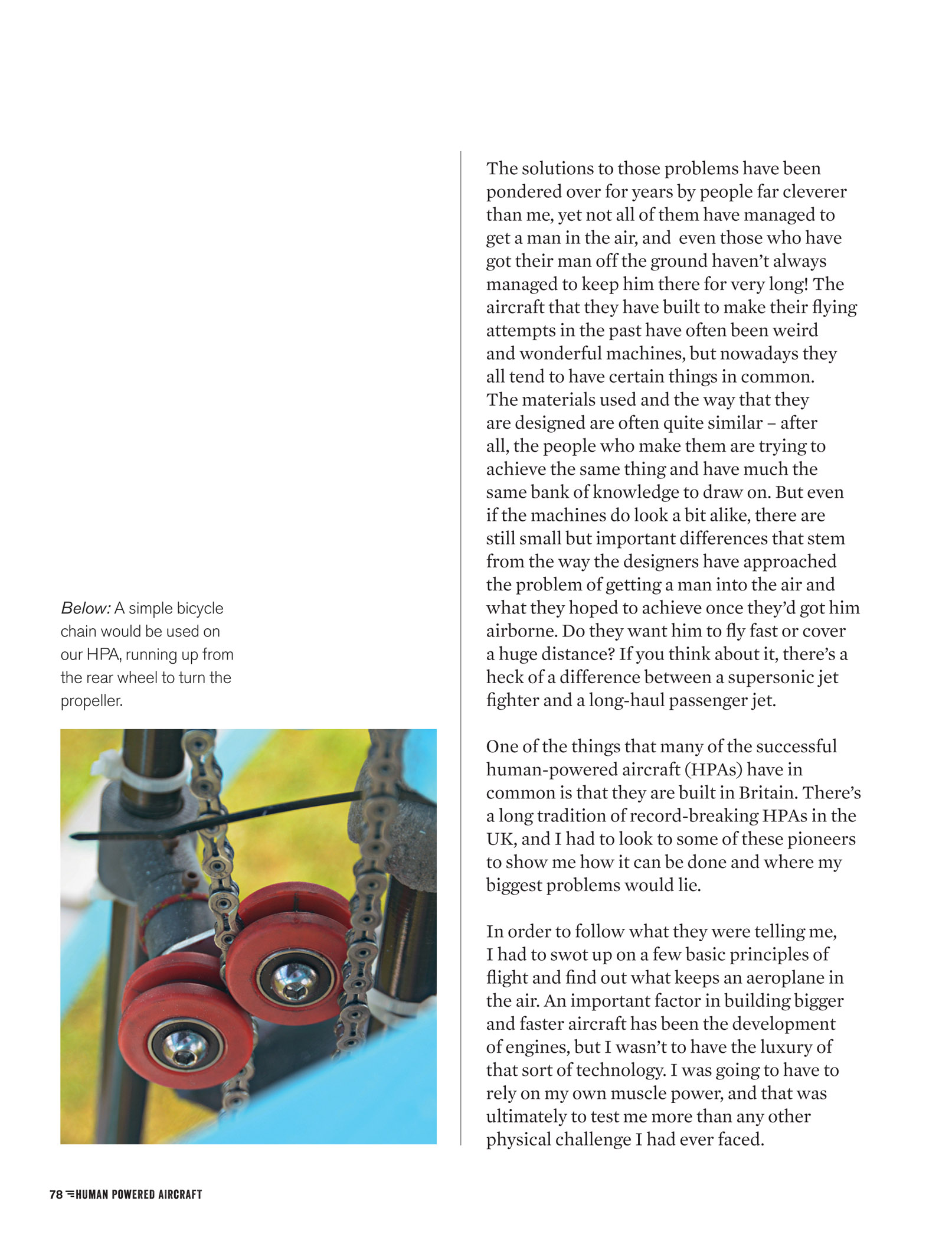
Below: A simple bicycle
chain would be used on
our HPA, running up from
the rear wheel to turn the
propeller.
chain would be used on
our HPA, running up from
the rear wheel to turn the
propeller.
The solutions to those problems have been
pondered over for years by people far cleverer
than me, yet not all of them have managed to
get a man in the air, and even those who have
got their man off the ground haven’t always
managed to keep him there for very long! The
aircraft that they have built to make their flying
attempts in the past have often been weird
and wonderful machines, but nowadays they
all tend to have certain things in common.
The materials used and the way that they
are designed are often quite similar – after
all, the people who make them are trying to
achieve the same thing and have much the
same bank of knowledge to draw on. But even
if the machines do look a bit alike, there are
still small but important differences that stem
from the way the designers have approached
the problem of getting a man into the air and
what they hoped to achieve once they’d got him
airborne. Do they want him to fly fast or cover
a huge distance? If you think about it, there’s a
heck of a difference between a supersonic jet
fighter and a long-haul passenger jet.
One of the things that many of the successful
human-powered aircraft (HPAs) have in
common is that they are built in Britain. There’s
a long tradition of record-breaking HPAs in the
UK, and I had to look to some of these pioneers
to show me how it can be done and where my
biggest problems would lie.
In order to follow what they were telling me,
I had to swot up on a few basic principles of
flight and find out what keeps an aeroplane in
the air. An important factor in building bigger
and faster aircraft has been the development
of engines, but I wasn’t to have the luxury of
that sort of technology. I was going to have to
rely on my own muscle power, and that was
ultimately to test me more than any other
physical challenge I had ever faced.
78 HUMAN POWERED AIRCRAFT